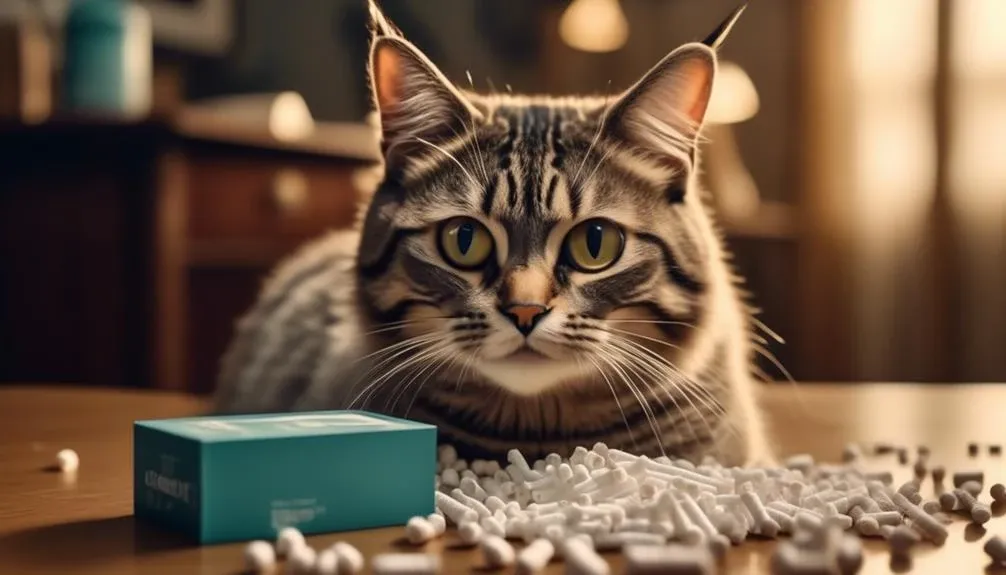The Best Fluffy Pancakes recipe you will fall in love with. Full of tips and tricks to help you make the best pancakes.

Cats are fascinating creatures with a penchant for finding joy in the simplest of things. One such object that seems to capture their attention is the unassuming Q tip.
But what is it about these small cotton swabs that drives cats into a state of frenzy? In this article, we will explore the reasons behind their fascination with Q tips and provide essential safety tips to ensure a worry-free playtime.
From discussing the unique sensory experiences they offer to understanding the importance of supervision during play, this article will shed light on why cats go crazy for Q tips and how to keep them safe while doing so.
So, if you're curious about the secrets behind this feline obsession and want to ensure your furry friend's well-being, then keep reading to discover the must-read safety tips that every cat owner should know.
Key Takeaways
- Cats are naturally attracted to Q tips because of their unique shape, texture, and ability to stimulate their hunting instincts.
- Playing with Q tips can be a bonding activity between cats and their owners, providing mental stimulation and entertainment for the cats.
- Safety is crucial when playing with Q tips, including proper storage, disposal, and monitoring of playtime to prevent accidents and injuries.
- Understanding and observing cat behavior during playtime is important, as it helps in providing appropriate toys and creating a stimulating yet safe environment for cats.
Reasons Why Cats Love Q Tips
Cats are inexplicably drawn to the allure of Q tips for several reasons, making them a favorite plaything among feline companions.
One reason why cats love Q tips is their unique shape and texture. The slender stick and the cotton swab at the end provide a different sensory experience for cats, enticing them to play and explore.
Additionally, Q tips are lightweight, allowing cats to easily roll them around and bat them with their paws. This movement stimulates their natural hunting instincts, providing mental stimulation and entertainment.
Moreover, using Q tips as a bonding tool with your cat can strengthen your relationship. Engaging in play with your cat using Q tips can create positive associations and shared experiences, fostering a deeper bond and trust between you and your feline companion.
Safety Tips for Playing With Q Tips
To ensure a safe playtime experience for both you and your feline companion, it is important to take certain safety measures when playing with Q tips.
One of the first steps is to store Q tips properly. Keep them in a sealed container to prevent your cat from accessing them when you're not around. Additionally, dispose of Q tips immediately after use to avoid any potential hazards.
It's also crucial to keep the trash can behind a closed door or cabinet to prevent your cat from rummaging through it and potentially swallowing a used Q tip.
Furthermore, it is essential to monitor your cat's playtime. Supervising their interactions with Q tips can help prevent any accidents or injuries.
Understanding Your Cat's Behavior
Feline behavior can be complex and nuanced, requiring a thorough understanding to ensure the well-being and happiness of your cat.
Cat behavior analysis is crucial in identifying common play behaviors and providing appropriate outlets for their natural instincts. Play is an essential part of a cat's life, as it helps them stay physically active and mentally stimulated.
Some common cat play behaviors include stalking, pouncing, chasing, and batting objects. Understanding these behaviors can help you provide appropriate toys and activities to keep your cat engaged.
It is also important to observe your cat's body language and behavior during playtime to ensure their safety and prevent any potential harm. By understanding your cat's behavior, you can create a stimulating and safe environment that promotes their overall well-being.
Importance of Safety During Playtime
Ensuring safety during playtime is of utmost importance for the well-being and protection of your feline companion. Cats are naturally curious and playful creatures, but accidents can happen if proper precautions are not taken.
Common playtime injuries include scratches, bites, and falls, which can result in physical harm or stress for your cat. To prevent such incidents, it is crucial to supervise your cat during playtime. This allows you to intervene if any dangerous situations arise and ensures that your cat is engaging in safe play behaviors.
Additionally, it is recommended to create a safe play environment by removing any hazardous objects or substances that could potentially harm your cat. By supervising and creating a safe play space, you can provide a secure and enjoyable playtime experience for your feline friend.
Ensuring a Safe Playtime Experience
Supervising your cat during playtime and creating a safe environment are essential steps in ensuring a secure and enjoyable playtime experience for your feline companion.
Setting boundaries is crucial to keep your cat safe during play. Designate a specific play area and make sure it is free from any potential hazards or breakable objects.
Additionally, choosing appropriate toys is vital to prevent any accidents or injuries. Opt for toys specifically designed for cats, such as interactive toys, puzzle toys, or toys that mimic natural prey. Avoid toys with small parts that can be easily swallowed or sharp edges that can cause harm.
Regularly inspect the toys for any signs of wear and tear and replace them as needed.
Conclusion
In conclusion, cats' fascination with Q tips can be attributed to their unique shape, texture, and the sensory experiences they provide. Chewing on soft objects like Q tips offers entertainment and relief for teething cats, while the rolling motion adds an element of fun to playtime.
However, it is crucial to prioritize safety when allowing cats to play with Q tips. By implementing proper storage, disposal, and supervision, we can ensure a safe and enjoyable experience for both cats and their owners.








